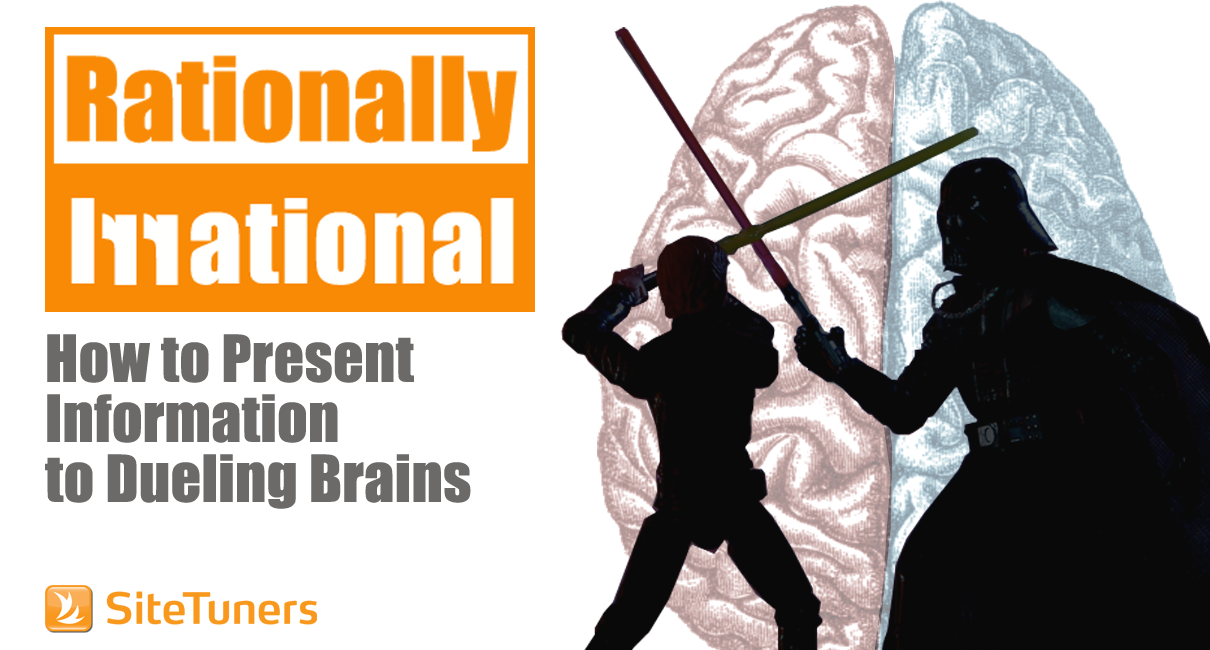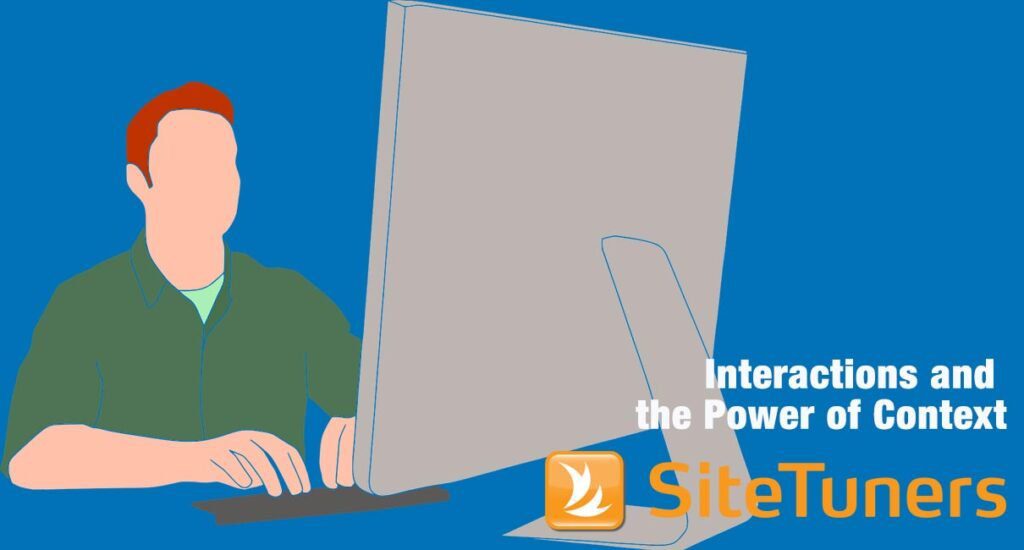
Online marketers will do well to keep this quote by science fiction writer Robert A. Heinlein in mind when doing user experience (UX) research.
According to John Whalen, CEO of Brilliant Experience, UX research should be aimed at watching what people do, rather than what they say, to understand what’s in their head. SiteTuners CEO Tim Ash agrees that anything modulated through voice, explanations, or post-action rationalization is suspect because people can’t access why they make certain decisions – it’s more intuitive.
In an episode of Landing Page Optimization, John and Tim discuss motivation and the psychology behind user actions, the conflict between brand management and web usability, and doing away with artificial UX research environments.
1. Blending the rational and emotional
When making high-level decisions, people like to believe that they’re being completely rational. A huge chunk of the process, however, is actually tied to emotions, instincts, and use of classic decision-making shortcuts because our memory easily gets overwhelmed.
John says that, therefore, the ideal user experience design supports what people believe their logical decision-making process is, and at the same time, their underlying unconscious decision-making.
It’s about presenting two things at once. The more obvious being the appeal to the outward, logical, coherent planner (i.e. presenting factual-based information and features/ benefits of the product or service); and the less apparent, but equally important, emotional appeal – that could be imagery that connotes success, copy that appeals to free thinking, or any of a dozen other emotional triggers.
The emotional aspect has less to do with your product or service, and more to do with desires and fears – activating the reward system in the brain, and reminding people of what they stand to lose if they don’t act right away.
Tim adds that, as Phil Barden discusses in his book Decoded: The Science Behind Why We Buy, brands have to map to high-level goals such as excitement, adventure, autonomy, discipline, security, and enjoyment. So it’s crucial for brands to figure out which of those is their promise and identify which angle to use to get to the person’s underlying motivation.
2. Getting the right associations
There’s a saying in neuroscience that ‘what fires together, wires together.’ This means that everything in our brain (besides those that are hard-wired) is associative learning, and parts of the brain that react to the same stimulus make stronger connections and associations (semantic networks).
You can leverage this by drawing the users’ attention to the right things and activating the semantic networks that have the meaning associated with the right frameworks that you want them to think about. These are things that drive the right kind of memories, thoughts, and decision-making processes to keep everything moving along.
3. Resolving branding and usability conflicts
One aspect of the psychology behind the purchase that marketers like to tap into is the brand. But just as too little branding creates problems, being a slave to the brand can also have its drawbacks – particularly around being detrimental to the user experience.
As an example, John cites a bank that had every title white with blue in the background, white buttons with the blue background, and white logo with the blue background. As a result, it wasn’t clear what the user could and couldn’t click.
In designing your page or site, apply the ‘obvious standard’ – if non-tech savvy users are able to instantly figure out how it works, then you’re on the right track.
The key to visual representation is being consistent with what the brand stands for, but at the same time applying what you know about business science and other things to make things flow. People read from top to bottom, from left to right, for example. You should respect that flow even if it gets in the way of the brand. The same thing is true with colors – the calls to actions and other buttons should pop out, and the brand colors should not get in the way of that.
Don’t get too obsessive about actual brand representation if that gets you stuck in the process. Note, for instance, that if you showed people a photo of cowboys and horses and asked them what cigarette brand that brings to mind, they’ll think Marlboro anyway even without the color red and the tall black font. This is because, in the brain, the brand maps to the underlying concepts of masculinity, freedom, and independence.
4. Observing users in the wild
John shares that there are valuable insights to be had in doing UX research right where the users would normally be and experiencing the environment they’re in rather than observing people in artificial environments (e.g. usability labs and focus group discussions). This way you can identify how the user’s body actually reacts when they’re experiencing buying, for example.
You can see what’s drawing their attention at that moment, identify the words they’re saying (to know if they’re thinking about it deeply or if it’s just surface level), and look at the steps they say they’re taking versus the behaviors they’re doing that suggest maybe different decision-making. By collecting these different pieces, you can build up some of the memory associations they have.
Ideally, you would not interrupt users in their tasks. John points out that people can’t hold all the memory and answer questions at the same time, so have them complete the task, and then talk about it after the fact.
Getting as close to the users as you can is optimal in UX research. However, for those without huge budgets, John suggests using tools like WebEx or GoToMeeting to connect with users remotely. Do a bit of testing, then show 20-second segments of the video clips to pique the stakeholders’ interest and get the research funded.
Rationally Irrational
To optimize your site, remember that you are appealing to two areas at once – the rational, meticulous adult who is combing through details, and the overwhelmed kid who is using mental shortcuts because his memory is overwhelmed. You need to be comfortable with that duality – use facts and logical presentation, but never forget to appeal to the emotional constructs that most of your core audience subscribes to.

